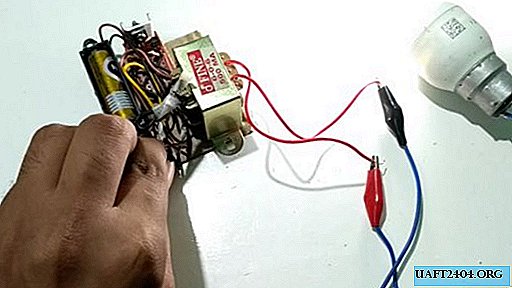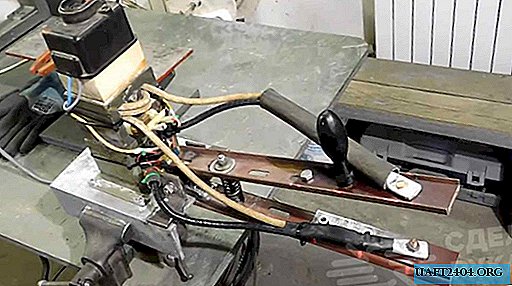Share
Pin
Tweet
Send
Share
Send

Inverters are needed where there is no way to connect to a 220 volt network. Inverters are divided into two types: some have a sinusoidal voltage of 50 Hz at the output and are suitable for almost any load. The other modified one has a high frequency output, of the order of 500-10000 Hz, and not always a sinusoidal waveform.
Inverters with a sinusoidal frequency of 50 Hz are expensive, since a large transformer or a simulation electronics unit is needed to generate a sinusoidal pulse of 50 Hz.
The simplest inverter that we will do is in the second group. And it is suitable for powering various switching power supplies, such as a phone charger, energy-saving light bulb - fluorescent or LED.
Required Components
Transformer 220V - 6V. You can tear it out of an old tape recorder, receiver, etc. or buy here - aliexpress
AA Battery Case - 1 - aliexpress
Switch - 1 - aliexpress
Circuit board - 1 - aliexpress
BC547 transistor (domestic analog of KT3102, KT315) - 1 - aliexpress
BD140 Transistor with heatsink (domestic analog of KT814, KT816) - 1 - aliexpress
0.1 uF capacitor - 1 - aliexpress
30 kΩ resistor - 1 - aliexpress
Instruments:
Soldering iron, if suddenly you do not have it here - aliexpress

Scheme
We will begin our acquaintance with the inverter with a circuit. This is a common multivibrator on a composite transistor. The result is a generator at the output of which there is a step-up transformer.
Putting the circuit together. The board is a breadboard with a lot of holes. We insert the parts and seal them with jumpers according to the scheme.

Work check
If all components of the circuit are serviceable, and the circuit is assembled without errors, then the inverter starts working immediately and does not need to be configured.


We connect an energy-saving lamp to the inverter output. We insert the battery and close the switch. The light comes on.

Of course, its brightness is lower than when powered by a network, but the fact that it works from an element with a voltage of 1.5 volts is a breakthrough!
Naturally, like everywhere here, the law of conservation of energy applies. Based on which it follows that the current in the battery circuit will be several times higher than in the bulb circuit. In general, the battery must be alkaline, then there is a chance that it will work a little longer.
When mounting and working with the inverter, be especially careful, the voltage of 220 volts is life threatening. And, believe me, 1.5 volt batteries are enough to deliver a shocking electric shock to a person, and even cause a cardiac arrest. As you know, for this it is enough to pass about 100 mA through a person, which this inverter is quite capable of.
Share
Pin
Tweet
Send
Share
Send











